Mold isn’t just an ugly patch on your wall — it’s a silent threat that could be hiding in the corners of your home, affecting your health and your rights as a tenant. If you’ve spotted suspicious discoloration, noticed a musty smell, or experienced unexplained allergies at home, it’s time to dig deeper.
Let’s break down what mold really is, why wiping it away won’t cut it, and what steps you can take — legally and practically — to protect yourself when it shows up in your rental space.
What Is Mold and Why Does It Spread So Easily?
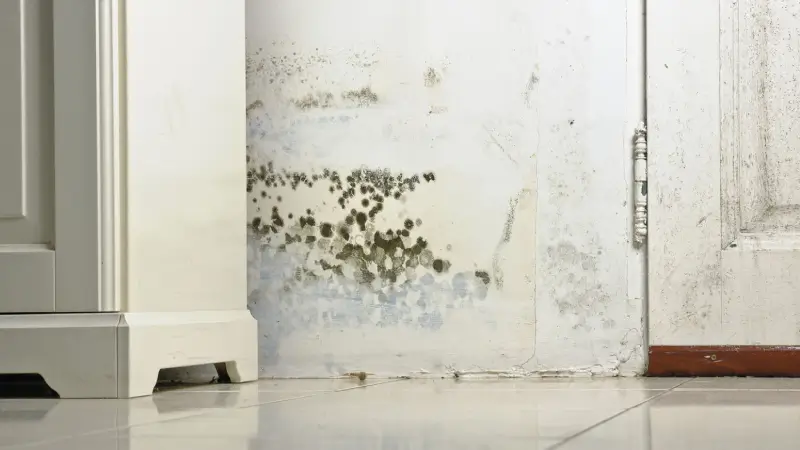
Mold is a type of fungus that thrives in moist, humid environments. It spreads quickly when there’s excess moisture from leaks, poor ventilation, or condensation. That tiny black or green spot on your ceiling? It could be just the tip of the iceberg.
The real problem lies beneath the surface. Mold spores infiltrate porous materials like drywall, carpet, or wood — and once they settle in, they’re incredibly hard to remove without professional help.
Your home may look fine at first glance, but mold can quietly grow behind walls, under floors, or inside your HVAC system if moisture isn’t properly managed. Identifying the source of the dampness is key to stopping mold at its root.
Why Simply Cleaning Mold Isn’t Enough
Wiping visible mold away with bleach or cleaner might make it disappear — temporarily. But don’t let that fool you.
Here’s the problem: mold isn’t just a surface issue. If you don’t eliminate the underlying moisture, it’s going to come right back — often bigger and worse. Even worse, cleaning mold improperly can release airborne spores into your home, increasing your exposure and spreading contamination to new areas.
Video : What is Black Mold and What are the Symptoms of Black Mold Exposure – Mold Busters
Effective mold removal requires:
- Identifying the source of moisture (like a leak or lack of ventilation)
- Removing or replacing contaminated materials
- Disinfecting and drying the affected area thoroughly
Ignoring this process can lead to a vicious cycle of recurring mold and mounting health concerns.
Mold Exposure: What’s Really at Risk?
Let’s talk health. Breathing in mold spores over time can wreak havoc on your body — especially if you’re already sensitive to allergens.
Common symptoms include:
- Nasal congestion and sneezing
- Itchy eyes or skin rashes
- Persistent cough or wheezing
- Headaches and fatigue
For people with asthma, allergies, or compromised immune systems, mold exposure can trigger severe respiratory issues and even lung infections. Children and the elderly are particularly vulnerable.
So no — mold isn’t just an aesthetic issue. It’s a genuine health hazard, and it needs to be taken seriously.
Are Landlords Responsible for Mold? Absolutely.
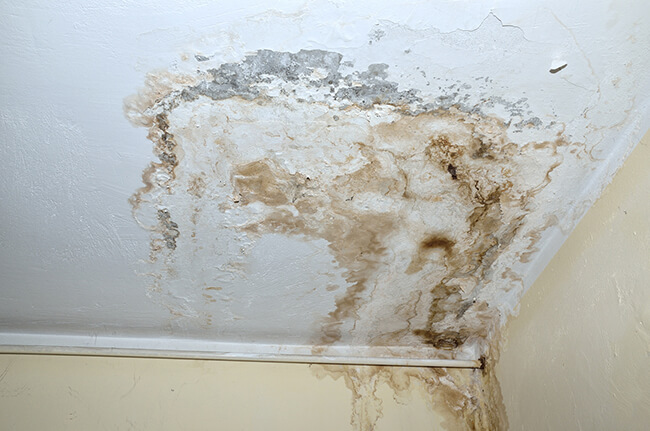
If you’re renting and mold shows up, you’re probably wondering: Is it my responsibility, or the landlord’s?
The answer depends on the situation, but in most cases, landlords are legally required to maintain safe, habitable housing. That includes addressing mold issues caused by:
- Roof or plumbing leaks
- Faulty windows or insulation
- Poor ventilation systems
- Construction defects
They’re also required to act promptly once they’re made aware of the issue. As a tenant, you have every right to expect repairs and remediation when mold arises from structural or maintenance problems beyond your control.
What to Do If You Discover Mold in Your Rental
Finding mold can feel overwhelming — but don’t panic. Here’s how to handle it the smart way:
- Document everything. Take clear, dated photos of all mold spots and any water damage. Keep records of odors, health symptoms, and room conditions.
- Notify your landlord in writing. Be specific. Include photos and describe the issue, its location, and any impact on your living conditions.
- Request action. Politely but firmly ask for immediate remediation and repairs. Give a reasonable deadline for response.
- Keep copies. Save every email, message, and repair request. If it comes to legal action, documentation is your strongest ally.
How to Talk to Your Landlord About Mold
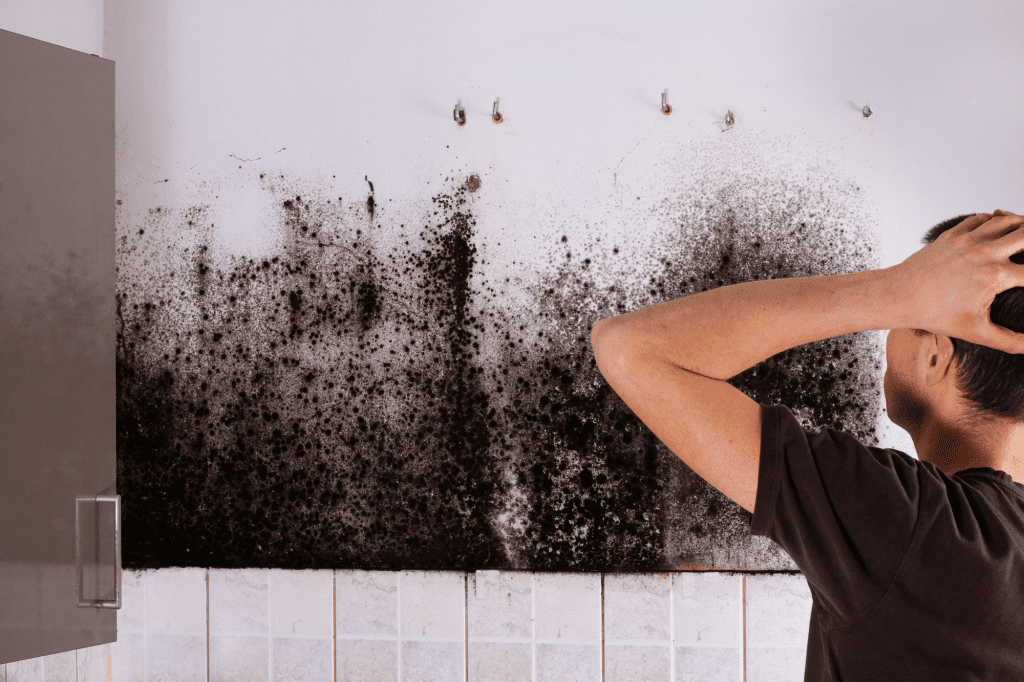
Your message doesn’t have to be confrontational — just clear and professional. Focus on facts: the health risk, the damage, and your rights. Here’s what to include:
- The date you noticed the mold
- Where it’s located
- How it’s affecting your health or home
- A request for inspection and professional treatment
If your landlord drags their feet or ignores the issue, you may need to escalate — either through local housing authorities or legal support.
When to Call in the Pros
Some mold situations are just too big or too hidden for DIY solutions. In these cases, it’s best to call a professional mold inspector or remediation company. They can:
- Locate hidden sources of moisture
- Assess the extent of contamination
- Safely remove mold and prevent it from spreading
If your landlord refuses to hire professionals, you may be able to file a formal complaint or even withhold rent, depending on your local tenant laws.
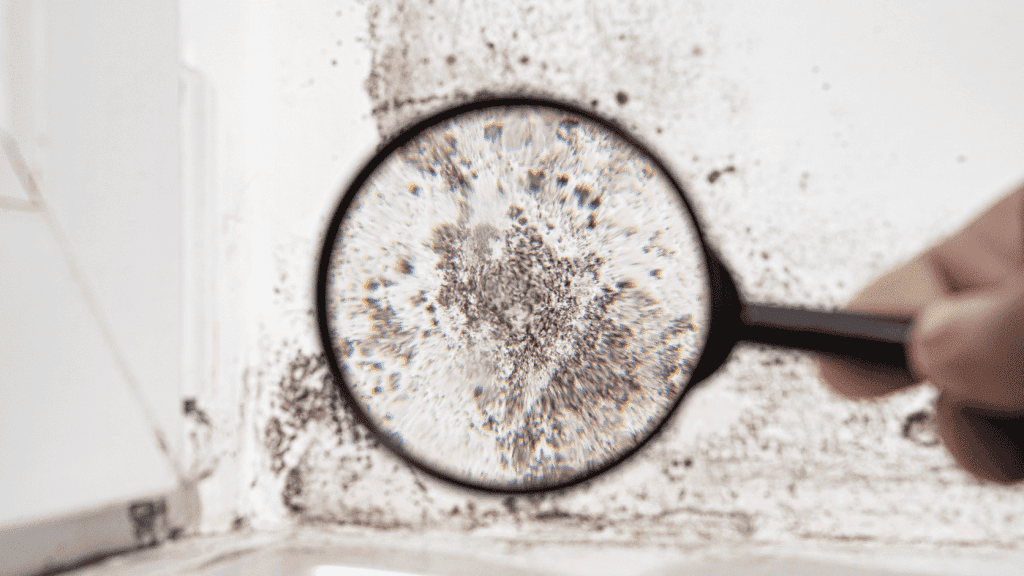
Know Your Rights as a Renter
Different states and cities have different laws, but most require landlords to provide a safe, habitable home. If they don’t address mold caused by poor maintenance or structural issues, you may have the right to:
- Break your lease early
- Seek rent reductions
- File a lawsuit for damages
- Contact a local housing authority
Always research tenant rights in your area and speak with a legal expert if you’re unsure.
How to Prevent Mold from Coming Back
Once the mold is gone, keeping it away means managing moisture and airflow in your space. Here are a few smart habits:
- Use exhaust fans in bathrooms and kitchens
- Run a dehumidifier in humid climates
- Fix leaks immediately
- Keep furniture slightly away from walls to allow air circulation
- Avoid overwatering houseplants
- Don’t let wet clothes or towels sit around
A few small changes can go a long way toward keeping your home mold-free for good.
Video : 1. When Mold in the Home Is a Problem (English)
Conclusion: Take Mold Seriously — And Take Control
Mold isn’t something to ignore or cover up. Whether you’re a tenant or a homeowner, it’s a warning sign that something’s wrong — and a direct threat to your health and comfort.
If you see mold, don’t wait. Act fast, document everything, and communicate clearly with your landlord. And if they won’t help? You’ve got rights — use them.
Because you deserve to live in a space that’s safe, clean, and healthy — not one where mold quietly threatens your health behind the walls. By staying informed, standing up for your rights, and taking action when needed, you’re not just protecting your home — you’re protecting your peace of mind.
So don’t settle for temporary fixes or vague promises. Demand real solutions. Whether it’s reaching out to your landlord, hiring professionals, or seeking legal support, taking the right steps today can prevent bigger problems tomorrow.
Mold may start small, but when ignored, it spreads — both in your home and in the impact it has on your life. Tackle it head-on, stay proactive, and remember: a healthy home isn’t a luxury — it’s a basic right.
My Husband and His Mom Got Rid of My Cat While I Was Away — but I Never Expected My Neighbor to Help Me Get Revenge

When I returned from a short trip, I discovered that my mother-in-law had decided to “free” me from my beloved cat, Benji. But thanks to my neighbor’s quick thinking and some dirt from the past, I not only got my cat back but also found the strength to free myself from a useless husband.
Benji wasn’t just a pet to me. He was my heart, my comfort, my family. I rescued him as a kitten when I was drowning in grief after losing my father. My husband, John, never understood. He called my bond with Benji “weird.”

A woman smiling and holding a white cat while a man stands in the background with crossed arms | Source: Midjourney
But I never imagined he and his mother, Carol, would take things this far.
The house felt wrong the moment I walked in after my weekend trip with my girlfriends. The usual patter of paws across hardwood floors was missing.
Some people believed cats weren’t as attached to their owners as dogs, but Benji could prove them all wrong. He always greeted me.

A white cat sitting on a shelf | Source: Pexels
But on this day, instead of his meows, I got silence. And even worse, I could detect the faint scent of my mother-in-law’s overpowering perfume lingering in the air.
I walked further into the house and saw John sprawled on the couch, distracted by his phone.
“Where’s Benji?” I wondered.
“No idea. Maybe he ran off,” he replied with a shrug.

A man sitting on a sofa holding a phone and looking up | Source: Midjourney
The casual tone in his voice set off my alarm bells. Benji never “ran off.” He was an indoor cat who got nervous just looking at the backyard through the window.
That’s when I noticed Carol sitting at the dining table with a smug smile playing on her thin lips as she sipped her coffee.
“Where is my cat?” I demanded, walking toward her.

A woman in a living room looks angry | Source: Midjourney
Carol set down the mug with deliberate slowness. “Well…” she began. “I used your time away to do what was necessary. Finally, you’re free from that animal.”
“Excuse me?”
“You were way too obsessed with that disgusting fur ball to focus on what really matters. It’s time to start a family,” she continued. “You’re welcome, by the way.”

An older woman with an impassive face sitting at a dining table | Source: Midjourney
Fire. Pure, hot, and raging fire coursed through my blood as I walked closer to the dining table. My hands clutched the back of a chair carefully, with all the restraint I could muster.
“What did you do with him?” I asked slowly.
“Now, Frances, don’t get dramatic,” Carol sighed, waving a dismissive hand. “You’re 32, for heaven’s sake. Time to grow up. No more time or money spent on pet food, toys, or whatever.”

A kitten looking at a toy | Source: Pexels
I turned to John, who hadn’t moved from his position on the couch. “You let this happen and you LIED to me?!”
He shrugged again, still not looking up. “I think my mother’s right. It’s time to move on.”
“Move on from what?” My voice cracked. “Having something in my life that actually brings me joy? Unlike this marriage?”
That got his attention. John finally looked up, his face flushing. “What’s that supposed to mean?”

A man sitting on a couch with his mouth open looking offended | Source: Midjourney
“It means you’ve never supported anything that matters to me. Not once. You and your mother just decide what’s best for my life without ever asking what I want.”
Carol stood up, her chair scraping against the hardwood floor. “We decide what’s best because you clearly can’t make good decisions for yourself. Look at you now, throwing a tantrum over a cat when you should be focusing on starting a family.”

An older woman standing next to a table gesturing with her hands | Source: Midjourney
“You mean a family like this one?” I laughed, the sound harsh and foreign to my ears. “Where my husband can’t make a single decision without consulting his mommy first? And he decides to lie to me just to please you?”
At that moment, I wanted to tell her that my husband lied to her, too, about many things. But I held my tongue. I needed to recover Benji first.
“Now you’re just being hysterical,” Carol crossed her arms. “This is exactly why we had to take matters into our own hands.”
“Tell me where he is.” I stepped closer to Carol. “Now.”

A woman looking angry and mouthing something in a living room | Source: Midjourney
“Or what?” Carol smiled, but I caught the slight uncertainty in her eyes. “What are you going to do about it?”
Before I could answer, movement from the window caught my eye. My neighbor Lisa was in my yard, waving urgently. When I met her gaze, she pointed toward her house and mouthed something.
Somehow, only I noticed her.
“I’ll be right back,” I managed to say to Carol through clenched teeth, then added, “And when I return, I want to know exactly what you did with my cat.”
Stepping outside, I felt the cool spring air against my flushed face. Lisa hurried over, and we crossed the street to stand on her lawn. It was then that I noticed the phone in her hand.

Two women talking on the front lawn of a house | Source: Midjourney
“I saw your mother-in-law with Benji yesterday,” she said, breathless. “You might want to see this.”
She held out her phone, open to Facebook, and my blood ran cold at the post. There was Benji, his distinctive white fur and bright green collar unmistakable, cradled in the arms of Samantha.
That woman made my life hell in high school, but ironically, she reinvented herself years later as a lifestyle and fitness influencer who spread positivity. Unfortunately, thousands of people fell for her act, and she now lived fully off social media.

A woman recording herself while wearing sporty clothes and using a floor exercise mat | Source: Pexels
But this particular post was the only thing that mattered to me. The caption read: “Meet the newest addition to the family! Sometimes the perfect pet just falls into your lap. #blessed #newcatmom”
“That’s not all,” Lisa said, swiping to a video. “I was watering my plants yesterday morning when I saw your mother-in-law carrying Benji’s carrier to her car. Something felt off, so I just got in my truck and followed her. I decided to record just in case.”

An older woman hurrying along, carrying a cat in a basket | Source: Midjourney
The video, which was obviously shot from the inside of Lisa’s truck, showed Carol’s sedan pulling up to a modern townhouse.
Carol emerged with Benji’s carrier, walked up to the front door, and handed my pet over to Samantha. My mother-in-law had a big smile on her face as she got back into her sedan and drove off.
The video ended there.
“I’m so sorry, Frances,” Lisa said. “I should have tried to stop her.”
“No,” I said, squeezing her arm. “You did exactly the right thing. This is perfect.”

Two women talking on the front lawn of a house, one holding a phone, both looking worried | Source: Midjourney
“Want me to come with you to confront her?”
I shook my head. “No, just send me the video. I need to do this alone. But thank you. For everything.”
I crossed the street and went back inside. Carol had moved next to John on the couch, and they were in a deep, quiet conversation.
They looked up when I entered, and I felt the urge to do something unpleasant to my mother-in-law. This feeling only intensified when she began speaking.

A man and his mother sitting on a couch looking up with upset expressions | Source: Midjourney
“If you’re done with your little drama,” she said.
“Samantha?” I cut her off. “Really? That’s who you gave my cat to?”
Carol’s eyes widened slightly before she caught herself. “I have no idea what you’re talking about.”
“Save it. I have a video of you stealing my cat and giving it to her. What was the plan here? You just happened to choose my high school bully to give Benji to? Was that supposed to be some kind of twisted punishment?”

A girl in a classroom being pointed at by other classmates | Source: Pexels
John stood up. “Frances, calm down. Mom was just trying to help.”
“Help who?” I asked. “Help her maintain control over our marriage? Help Samantha get more social media followers with a cute new pet?”
“This is ridiculous,” Carol snapped. “John, tell her she’s being ridiculous.”
But I was already grabbing my car keys. “I’m going to get my cat. When I get back, I want you both gone.”
***
Samantha’s townhouse sat in an upscale development across town. Each knock on her door felt like a hammer to my racing heart.

Several townhouses | Source: Pexels
Two minutes later, the door swung open. My bully stood there in yoga pants and a crop top, and her surprised expression quickly morphed into a sneer.
“Well, if it isn’t ‘Frances, no Chances,’” she said, blocking the doorway. “You never had friends or boyfriends. Isn’t that why you had to marry that boring accountant?”
She wasn’t entirely wrong. I had been a loner for most of my life. My family was my only haven, which is why I took the death of my father so horribly. My mom and sister were still there, but it was Benji who ultimately saved me.

A woman looking sad and distraught in a cemetery | Source: Midjourney
John had been my first everything.
Now I could understand the importance of dating, learning from mistakes, and experiencing different relationships.
If I had any experience, I probably wouldn’t have chosen him or taken all his mistakes and troubles in stride, thinking I was being a good wife.
“Where’s my cat?” I asked, ignoring her jabs and focusing on what mattered.
“You mean my new cat?” Samantha’s eyebrows rose. “He was a gift. Totally legal. No backsies.”

A woman in black exercise clothes smirking outside her townhouse door | Source: Midjourney
“A gift from someone who had no right to give him away. That’s theft.”
She laughed. “Please. Who’s going to believe you? It’s just a cat. Besides, he’s much better off here. Have you seen how many followers I have? People love me. He’ll be famous.”
“The police might be interested in this video of Carol stealing and giving away my property, especially because Benji is registered to me in his microchip.”

A woman standing on a lawn looking angry | Source: Midjourney
Samantha’s smile faltered slightly. “Please, you won’t call the police.”
“Oh, I’ll do more than just call the police,” I said, pulling out my phone. “Remember high school, Samantha? Remember how you made my life miserable? You laughed at me every day for just wanting to be left alone. And what about my homecoming dress? The one you and your bully friends ripped to shreds?”

A group of friends dressed for a school dance | Source: Unsplash
I pulled up an old photo I’d kept all these years. “I have proof of what you did with that dress. And guess what? I can make a video. A very detailed video. About all of it. And post it to every platform. I’m sure it’ll go viral. After all, so many people love you.”
The color drained from Samantha’s face. Her carefully crafted influencer image trembled before my eyes.
“Don’t,” she whispered, her bravado crumbling. “Please don’t. Just… take the cat.”
She disappeared inside and returned with Benji, who looked relieved to see me. “Please, just don’t post anything.”

A woman in exercise clothes outside a townhouse, holding a white cat | Source: Midjourney
I gathered Benji into my arms, feeling his purr. It gave me comfort, but also, the strength to get in my car and go home.
John and Carol were still there when I walked in with my cat secure in my arms.
Carol jumped up from the table. “How dare you—” she started.
“No,” I cut her off. “How dare you. Both of you. I thought I told you to get out of my house.”
“Frances, you’re being ridiculous,” John said.

A man sitting on a couch, looking up worriedly | Source: Midjourney
“I want a divorce.”
Carol gasped. “You ungrateful—”
“I have video evidence of you stealing my cat,” I said, meeting her eyes. “Leave now, or I’m calling the police.”
“You can’t do that!” Carol insisted. “And this is my son’s house, too!”
“It’s not,” I replied and stared at my husband. “Didn’t he tell you? He might be an accountant, but he has terrible credit. I had to sign the loan for this house on my own. It’s just my name on the deed.”
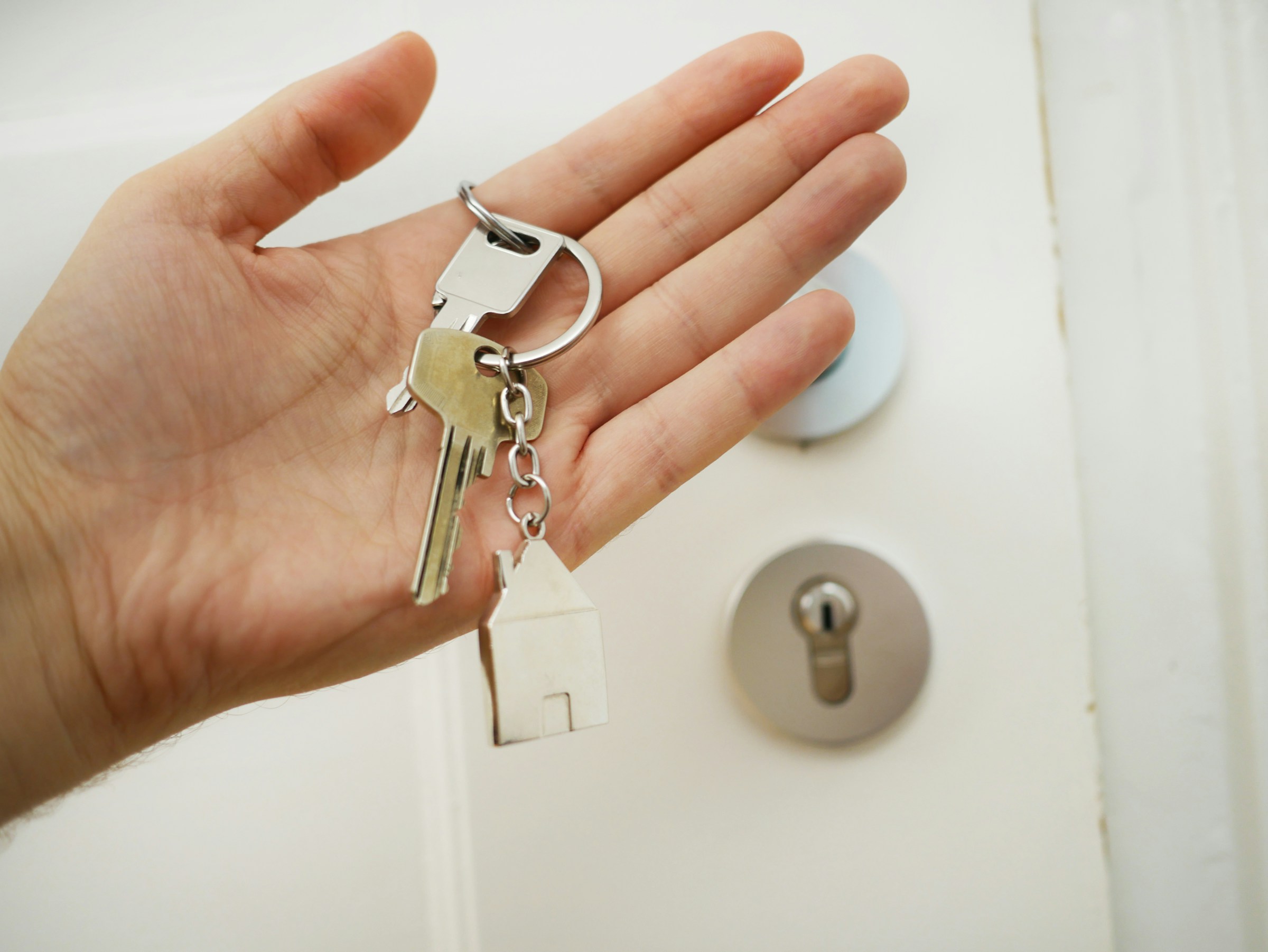
A woman holding keys to a house | Source: Unsplash
“What?” Carol turned to her son with wide eyes.
“I would also advise on not helping him so much,” I continued. “He actually spends all you give him playing poker with his buddies.”
“Frances!” John shouted, outraged, finally getting up from the couch.
“Leave now, or I might tell your mom that it’s not just poker,” I added. “There’s a little club next to the airport…”

The entrance to a nightclub | Source: Unsplash
“Stop!” he urged, one hand up. “We’re leaving.”
John pulled his mother out, while she bickered the entire time.
At last, the door clicked shut behind them, and the house fell quiet again.
The scent of Carol’s perfume would soon drift away forever, and the evidence of John’s uselessness as a husband would soon be gone, too.
Only Benji’s heavenly smell would remain, along with the promise of a better future.
“With that thought,” I muttered, pulling out my phone and calling my lawyer. After that, I was buying Lisa something special.

A woman standing in a living room, holding a cat and a phone, smiling | Source: Midjourney
This work is inspired by real events and people, but it has been fictionalized for creative purposes. Names, characters, and details have been changed to protect privacy and enhance the narrative. Any resemblance to actual persons, living or dead, or actual events is purely coincidental and not intended by the author.
The author and publisher make no claims to the accuracy of events or the portrayal of characters and are not liable for any misinterpretation. This story is provided “as is,” and any opinions expressed are those of the characters and do not reflect the views of the author or publisher.



Leave a Reply